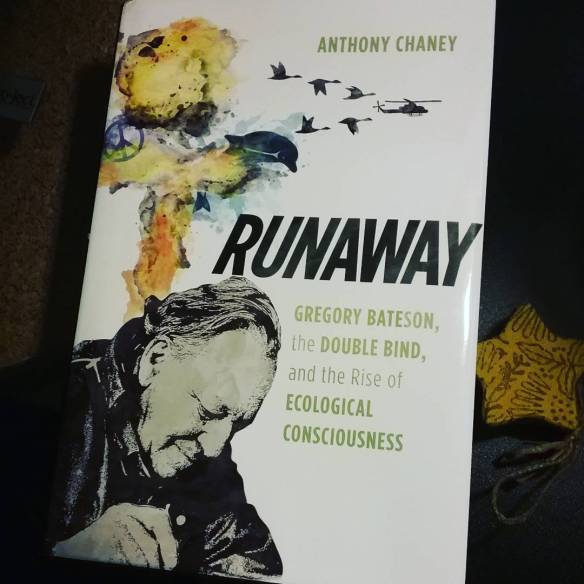
Favorite Reads of 2023
Happy New Year! Below are my favorite reads from last year, all highly recommended.
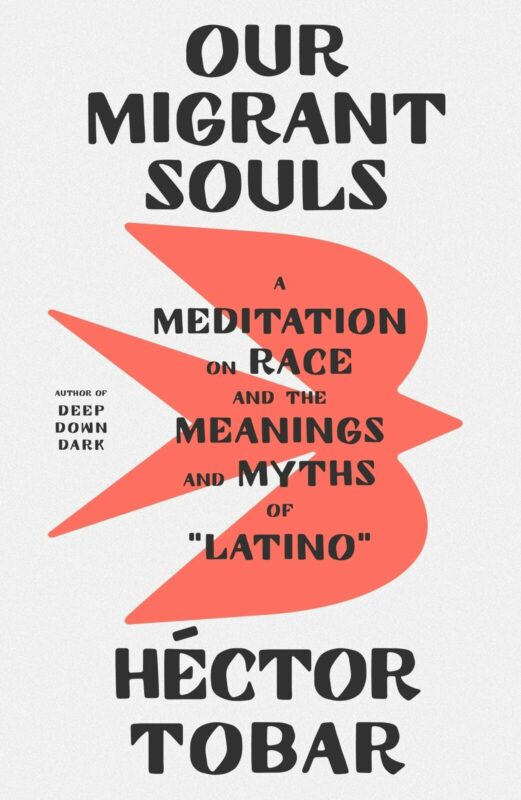
Our Migrant Souls: A Meditation on Race and the Meanings and Myths of “Latino” by Héctor Tobar. Born in 1963 in LA to parents newly arrived from Guatemala, Tobar has written journalism, novels, and works of non-fiction. My first exposure to his precise, insightful prose was an essay titled, “The Assassin Next Door,” published in the New Yorker several years ago. That piece combined memoir with national history to demonstrate how racist hatred and transracial solidarity are nurtured within the same American spaces. In Our Migrant Souls, Tobar adds to this combination what he’s learned from the lives of his Latino students as an instructor of writing and literature. Writing about the Latino experience is typified by tales of hardship, discrimination, and family dysfunction. In contrast, Tobar emphasizes the courage of the immigrant, and how their initial boldness—that decision to migrate, to court danger and loss—becomes the foundational story of so many American families.
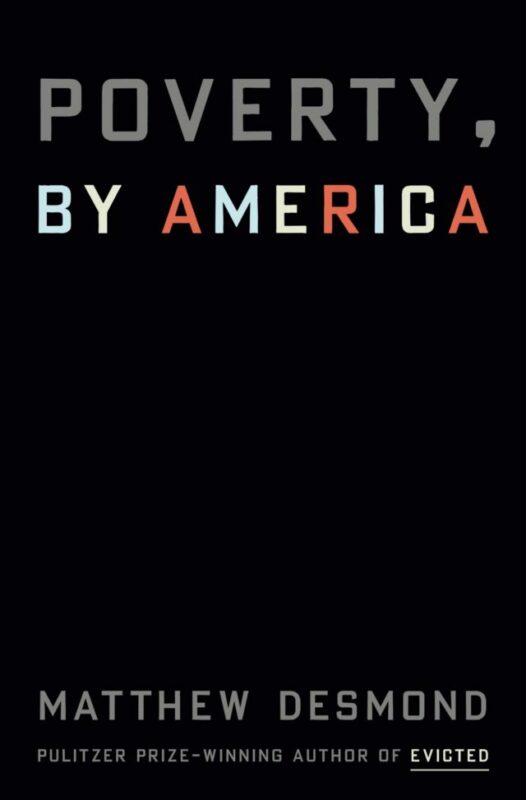
Poverty, by America by Matthew Desmond. Whether I’m reading history or sociology, natural science, memoir, or even fiction, I’m not used to having my conscience stung so directly. Desmond’s analysis, in general terms, was far from unfamiliar. But his delivery of it spotlights the role of complacency and makes the whole question of the persistence of poverty a moral question. I took this up in detail in my last post on this blog. Desmond believes in the efficacy of policy, most especially when it has widespread political support and is shaped to be inclusive in its benefits. But for Desmond, the crucial question about poverty is who benefits from it, to which he answers “the rest of us.”
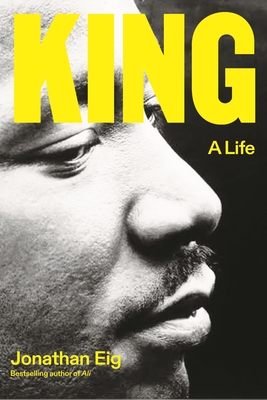
King: A Life by Jonathan Eig. Turns out I was wrong to think I didn’t need to read another Martin Luther King, Jr. biography. This one, by humanizing him, serves as a corrective in an era of warped MLK iconography. Eig stresses King’s precarious mental health under conditions of unimaginable stress and fear of attack, the FBI hounding he received, driven by J. Edgar Hoover’s deep, racial animus. Eig also foregrounds the perspective and contribution of his wife and movement partner, Coretta King. One gets a sense of the shortness of King’s life, his youth, his uncompromising understanding of the leadership role he’d accepted, and the decisive quality of his faith in a personal God. [get the right phrase]. The result is a moving read and, for me, an even deeper admiration.
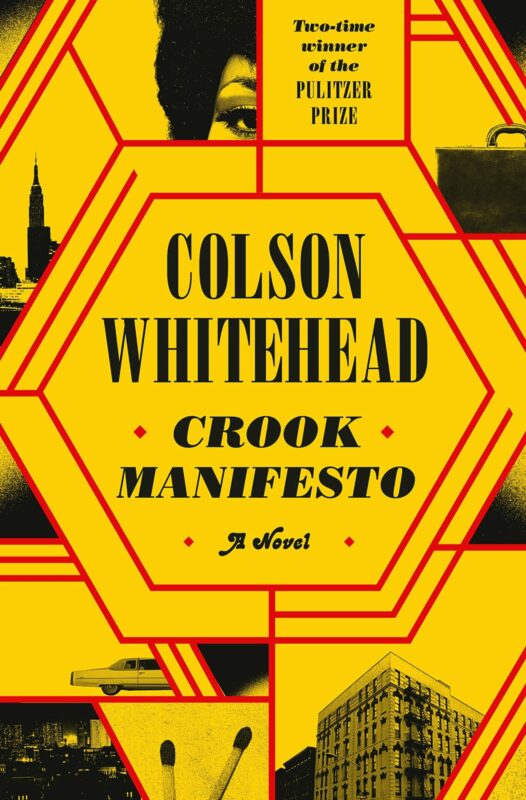
Crook Manifesto by Coleson Whitehead. Whitehead has tried his hand and succeeded in several genres of fiction. He reaches near-perfection with Crook Manifesto, the second book in his Ray Carney crime series set in 1960s and 70s Harlem. Carney is a neighborhood furniture store owner with a foot on each side of the law. On one side is his legit life, his business, his wife and young children, his wish for his family to prosper and rise. On the other side is his “bent” life, the now-and-then fencing and shady acquaintance that are necessary to keep his aboveboard life afloat. That the two sides coexist in contradiction makes for great suspense, cultural history, specificity of language, time and place, and sharp commentary on the conditions of Black life in America. The plot is set in motion by Carney’s desire to get his teenage daughter tickets to the Jackson 5 concert. Things just get better from there.
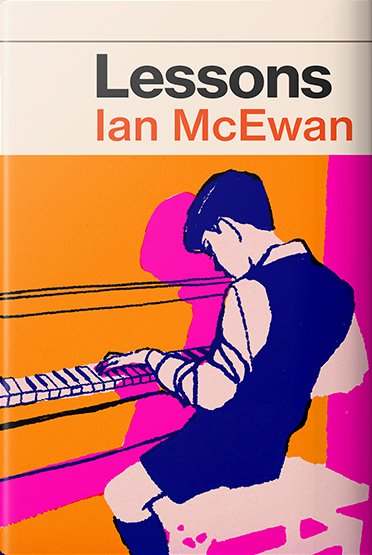
Lessons by Ian McEwan. I re-read this 2022 book in 2023. It’s McEwan’s seventeenth novel, and again one of the great English prose stylists takes up one of his enduring themes: the steep price an artist pays for their devotion, whether or not it’s morally justified. Here, in a book that rivals Atonement as the author’s masterpiece, McEwan delivers a corollary, which I found welcome, especially compared to the colder conclusions he comes to in some of his other books. A half decade or so younger than Biden, Dylan, the Beatles, and the Stones, McEwan has reached an age from which he can contemplate with authority a life as a whole, its ups and downs, its feasts and famines, its twisting trajectories. To American scholars of the Cold War and of the unexpected politics and economics of its aftermath, the book grants the experience of these years from a European perspective—closer to the action in several respects.
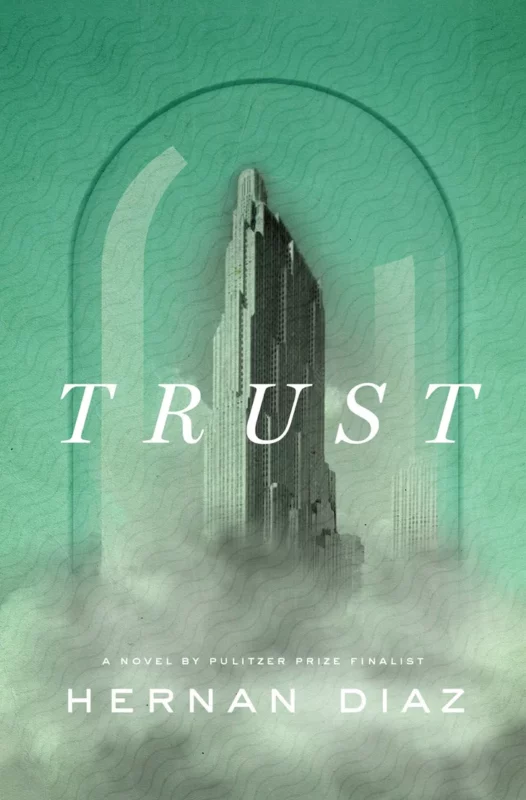
Trust by Hernan Diaz. This ingeniously constructed work of metafiction was published in 2022 and this year was awarded the Pulitzer Prize. With it and its predecessor, In the Distance (2017), another terrific but lesser-known work of historical fiction, Diaz emerges as a major writer. The book demonstrates the author’s deep research in 1920s Wall Street tradecraft, his command of magnate discourse, his familiarity with period texts, and his deep appreciation of Borges. We are again living in an age of unchecked corporate arrogance and power. Dangers loom, and when our bacon is saved, it’s often due to female agency against the odds. It’s a timely, resonant book.
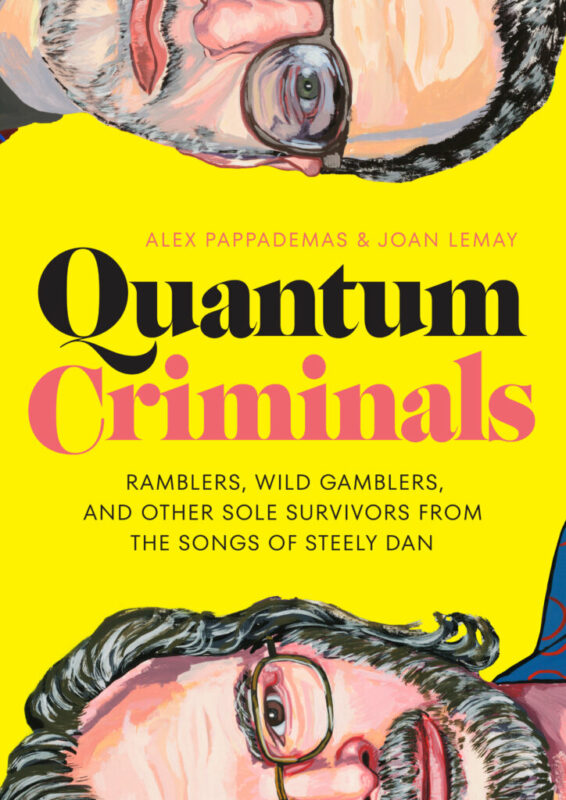
Quantum Criminals: Ramblers, Wild Gamblers, and Other Sole Survivors from the Songs of Steely Dan by Alex Pappademas with illustrations by Joan LeMay. This is the outlier on the list, mostly because its topic, the rock group Steely Dan, is likely of limited interest. For both 1970s punk and 1990s grunge rockers, Steely Dan epitomized the contemptible sound of slick, complacent professionalism. Now the group has been discovered and celebrated by a new generation, and Pappademas, one of these new aficionados, explains why. First, digital recording technologies have made slickness less a privilege than a choice. Second, and more importantly, the group’s “blue ribbon misanthropy” was prescient. “Our fast-warming world,” Pappademas writes, “is more Steely Dannish than it’s ever been.” Witty, articulate, full of tasty references, Quantum Criminals is that rare work of criticism that sustains its verve to book length.
A version of this post appeared in the Society for US Intellectual History blog.
Provocation and Hope in Matthew Desmond’s Poverty, By America
It is the nature of contemporary life, I suppose, that events less than a year old seem to have happened long ago. It was only last March that I read Matthew Desmond’s Poverty, By America. That book should have dominated public conversation. It should been hashed over in every corner of the media and fast-tracked as a Netflix series. A friend read it, and we talked about it for a week or so. But every few days, a new emergency arrives and covers over the one that came before it. Did Desmond’s book get enough play? It doesn’t feel like it.
That might make sense had the book been an indigestible doorstopper, but Poverty, By America is a quick read, less than 200 pages minus the notes, written in swiftly-paced prose, and laser-focused on its argument: that poverty in our nation is the result of systemic exploitation in the sectors of labor, housing, and finance; that, in other words, our economy is structured to make—and keep—a large segment of its population poor.

Nothing new, some might say. To explain the persistence of poverty, liberals and leftists typically speak in terms of systems. Oppression and exploitation inhabit and are reproduced within institutional structures. The right, in contrast, focuses on individual character. Hard work and self-discipline, the ability to defer gratification, wise life decisions, and piety are what make the difference between prospering and being poor. Moving further rightward along this spectrum, defects in character are associated with some racial essence, and racist ideas are mobilized by racist power.
Without arguing in an explicitly partisan manner, Desmond offers plenty of empirical evidence to support progressive modes of analysis and examples of liberal policies that have proven to be effective toward leveling the economic playing field. He also offers evidence that demonstrates the failure of right-wing, character-based policies. Yet he declines to rest in structural explanations. “At the end of the day,” Desmond asks, “aren’t ‘systemic’ problems—systemic racism, poverty, misogyny—made up of untold numbers of individual decisions motivated by real or imagined self-interest?” (40-42).
I frowned at the question, reminded of Margaret Thatcher saying there is no such thing as society, reminded of politicians pontificating about ‘colorblindness’ and defining racism as entirely a matter of the individual human heart. But Desmond’s point is that both structural and character-based explanations can be ways to evade responsibility. “Tens of millions of Americans do not end up poor by a mistake of history or personal conduct,” he writes. “Poverty persists because some wish and will it to” (40).
Poverty persists, in other words, because there are beneficiaries, and those beneficiaries aren’t only the super, crazy rich, not only the homegrown oligarchs so chillingly satirized in the HBO series, Succession. Those beneficiaries are any of us whose free bank accounts, for instance, are funded by the overdraft penalties that the poor regularly pay, any of us whose home values have skyrocketed due to the manufactured scarcity of affordable housing or whose mortgage payments are offset by the Mortgage Interest Deduction. Those beneficiaries are any of us invested in the stock market, even through their employer retirement investments. It’s one thing to say that the economy is structured to make a segment of the population poor. It’s a step further to point out how their poverty funds the prosperity of the other segment.
If this isn’t troubling enough, Desmond draws an analogy between the persistence of poverty today and the persistence, in earlier times, of chattel slavery. The free benefited from the exploitation of the enslaved, and not only the southern oligarchs, the slaveholders, the slave traders, not only white Americans in the South, but all free Americans, as groups, as families, and as individuals. Desmond calls for Americans to become “poverty abolitionists,” and as the nineteenth-century anti-slavery abolitionists did, to take a stand, join the movement, disavow the benefits, and act to bring poverty to an end.
Here again I shifted in my chair. During those days of the US History course that I teach, when we’re covering the antebellum period, the abolitionist movement, and “the Crisis of the 1850s,” the question has crossed my mind more than once: Would you have been an abolitionist back then?
I won’t belabor the logical problems this sort of inquiry involves except to say that we are products of our historical moment. There’s no going back in time and being the same person you are now. Yet the question keeps returning. It’s trying to get at something. Abolitionists were those willing to be vilified and put in danger of attack or exile. To be an abolitionist was to be annoying, a troublemaker, an agitator of the social peace. It was to be willing to put one’s future at stake. So when I ask myself, would you have been an abolitionist then, what I’m really asking is, are you willing to be the equivalent of one today?
Some of us, when an idea disturbs our peace of mind, follow the homeopathic school and seek out more of the same. I went back and read Desmond’s previous book, Evicted: Poverty and Profit in the American City, (winner of the Pulitzer Prize in 2017) and then a more recent book by Tracy Kidder called Rough Sleepers, about the homeless in greater Boston.
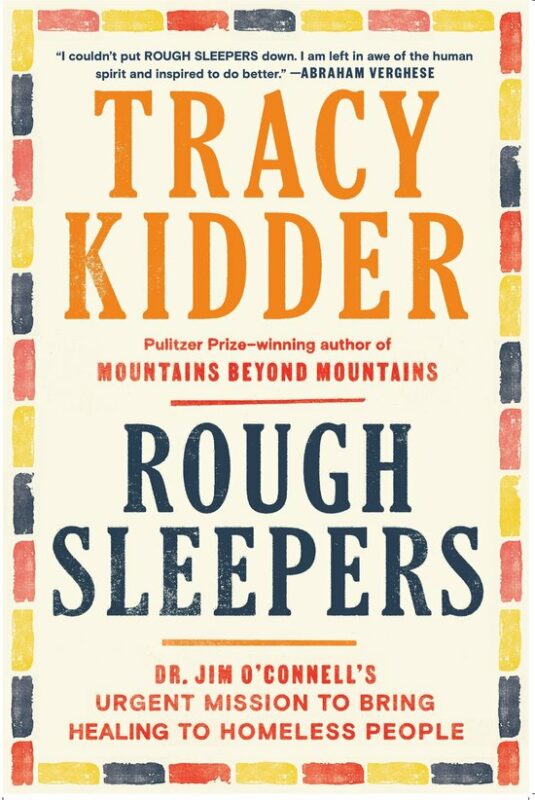
Kidder’s hero is a doctor named Jim O’Connell. O’Connell was a gifted student of philosophy who came to medicine late in life. Overwhelmed by the great human problems, he finds peace in service to the poor. He treats their diseases, tends to their wounds, loans them money. He washes their feet in a kind of pride-purging ritual. One of the ongoing conflicts of the book is that although O’Connell helps individuals, his work does little to nothing to solve the general problem. When from time to time the truth of this discourages him, he remembers his mentor, Barbara McGuinness, a nun who ran a city clinic. It wasn’t uncommon for a new volunteer at the clinic to raise exactly the question that haunted O’Connell: What can we do to fix the problem itself?
McGuiness had little patience for the question. The important thing, she’d say, was to “do the best we can right now and take care of these folks.” O’Connell didn’t love the answer, but he accepted it. “This is what we do while we’re waiting for the world to change.”
Desmond shows a similar impatience with abstractions now and then in Poverty, By America. For instance: Is abortion immoral? What are the limits of bodily autonomy? When does life begin? These questions can never be resolved, Desmond states. What he knows for certain—what, in other words, sociology shows—is that when access to abortion is restricted, the number of women suffering poverty increases, and women already suffering poverty, suffer more. Evidence from sociology also supports the effectiveness of anti-poverty programs, especially those that put money directly into poor people’s pockets. Poor people tend to use that money to leverage opportunities and practices that serve to buffer against poverty’s ever-narrowing constraints.
Desmond cites, for instance, those arrangements that aided workers during the pandemic—tax breaks, direct checks from the government, protections against eviction, suspended loan payments, and so on—that not only worked to help sustain life under pandemic restrictions but that resulted in a significant reduction in poverty. Desmond has policy ideas that could be put into place immediately: Beef up the enforcement arm of the IRS so that the wealthiest tax cheats pay their fair share. Get rid of those tax policies, such as the Mortgage Interest Deduction, that don’t reduce poverty so much as they subsidize wealth. “Tear down the walls” that allow resources to be made scarce and that in turn allow the poor to be corralled into spaces that facilitate their exploitation.
These are “liberal” ideas, by any conventional understanding of the word. For those who take a more radical stance, these policy ideas are insufficient. For these folks, many of them young—the age of my children, of my students, with their whole (none-too-promising) futures ahead of them—the situation is too dire, too urgent for liberal tinkering. They might also point out how Desmond has nothing to say about the climate emergency. Desmond’s policy recommendations may indeed result in a ticking down of the poverty index. But will they have any effect on the collapse trajectory?
For some who think this way, the change space is in fundamental orientation, worldview, metaphysics, the social imaginary, what-have-you. Desmond is evenhanded here, too. Along with his policy suggestions, he includes passages that speak to the social imaginary. He quotes, for instance, from Sondheim’s Sweeney Todd: “The history of the world, my sweet, is who gets eaten and who gets to eat.” This predatory, hyper-competitive model continues to dominate the center of social reality, despite a constant stream of criticism. Desmond astutely points out how we condemn such arrangements when they occurred in the past, as with slavery, but in the present, tend to let them slide. Why? Desmond speculates that we are “captivated by a heroic narrative of progress” (43). The very fact that these critiques are so old and familiar makes me doubt the very possibility of change at this level of abstraction.
On this matter, Desmond quotes James Baldwin:
Any real change implies the breakup of the world as one has always known it, the loss of all that gave one an identity, the end of safety. And at such a moment, unable to see and not daring to imagine what the future will now bring forth, one clings to what one knew, or thought one knew; to what one possessed or dreamed that one possessed.
The quote comes from Baldwin’s 1956 essay, “Faulkner and Segregation.” It’s another reminder of the correspondence between American poverty and the legacy of enslavement. Desmond hastens to add that giving up our identity as modern people also means giving up the baggage that goes along with it, the shame of living well in a society where so many struggle to procure the basic necessities. It means giving up “the loneliness and empty materialism” of contemporary life (176-77).
To be clear, Desmond believes Americans can abolish poverty but “only when a mass movement demands it so” (184). He sees promise in present-day labor movements and movements for housing justice. He gives People’s Action and William Barber’s Poor People’s Campaign each a shout-out. He quotes Deepak Bhargava, former president and executive director of the Center for Community Change. “Get into relationship,” Bhargarva advises. “Find some way in your life to be in relationship with working class and poor people” (185-88)—not the relationship of a person of means giving charity to someone in need, but a relationship of equals working together in a political cause.
“Would you have been an abolitionist back then?” That question I asked myself in class was always fleeting, as if something were keeping me away, some avoidance of disappointment in myself, perhaps, and on the other side of that, a crush of hopelessness and futility. If it is indeed possible to make change in abstract imaginaries, there’s a force field, a strong one, warding it off. Partisan polarization may be a component of the force field, or as Desmond puts it, “just another scarcity diversion, just another way to narrow our vision so that an emancipated future remains outside our field of view” (188). He doesn’t believe that the issue of economic injustice is a partisan one. He believes it’s a cause everyone can get behind.
This essay was published at the Society for US Intellectual History blog.
Richardson and Woodard: It Tracks
In Heather Cox Richardson’s new book, Democracy Awakening, US history turns on conflicting interpretations of the Declaration of Independence and its claim that “all men are created equal.” One interpretation is broad and expansive, the other narrow and strained. The broad one figures the word “men” generically to include both men and women. It understands the word “equal” expansively: equal in access to rights, equal under the law, equally free to participate in civic life and to have a say in governance at all levels. The opposing interpretation ties itself in knots to narrow and qualify those “self-evident” words. Interpreted broadly, the Declaration refutes the old feudal order, its authoritarian structure, its hierarchy of tradition and castes. The narrow interpretation seeks to rescue its “hierarchical vision,” as Richardson puts it, and to defend it as natural or as divinely sanctioned. The broad interpretation is more popular and persuasive than the narrow one, and when the rationales and legal theories of the advocates for the narrow interpretation fail to win over the majority, they resort to lying, cheating, violence, and terror.
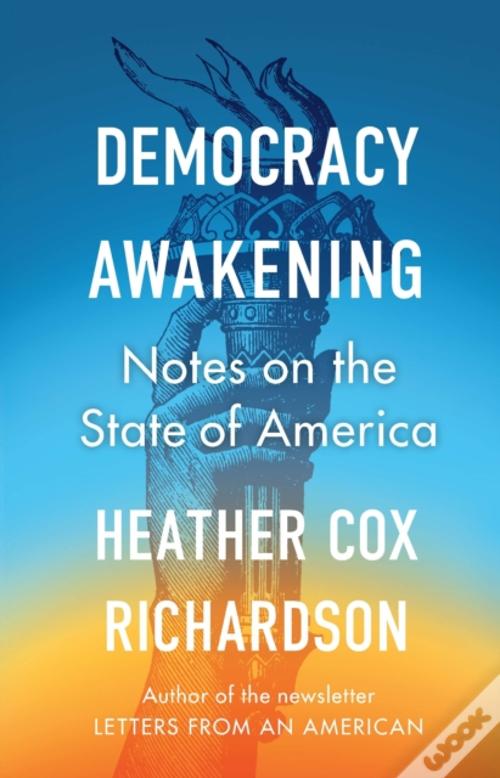
Am I oversimplifying the argument? Maybe. It’s certainly a boiled-down version of US History. But it tracks.
It tracks, for instance, with the way Colin Woodard sees US History. Woodard’s argument, presented most plainly in his much-read 2011 book American Nations, is that US history is best understood as the history of conflict between distinct regional cultures in North America. Two of these, which Woodard calls “Yankeedom” and “Deep South,” have been in an ongoing struggle over control of the federal government from the start. Yankeedom has its roots in Puritan Massachusetts, and although its zeal to impose a one-size-fits-all program for the greater good may annoy outsiders, its utopian spark supports the more expansive view of American equality. The Deep South is rooted in the sugar plantations of Barbados, transplanted to the Carolinas in the second half of the seventeenth century. It has always held and defended the hierarchical vision, the narrower interpretation of the Declaration.
When I first read American Nations, I had been primed for its argument by David Hackett Fischer’s Albion’s Seed. That book, which I came across in my father’s library, helped me locate myself and my own upbringing and ancestry. Since the topic of “where we came from” never came up in family conversation, Fischer’s study made sense of what had been hazy before. American Nations, aimed at an audience outside the academe, is a more assessable book than Albion’s Seed. I found its argument enormously persuasive, so much so that alarm bells went off.
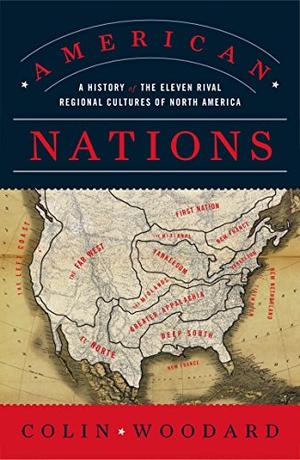
The part of the argument that bothered me was the way it generalizes vast groups of people, assigns to them lifeways and bodies of belief, and then invites the passing of judgment upon them. Yankeedom folks are scolding and inflexible, Tidewater folks haughty and classist, New Amsterdamers tolerant but mercenary, Borderlanders clannish and defensive, and so on. On the one hand, this seems like plain stereotyping. On the other, didn’t South Carolina’s political leadership consistently take the lead in nullification, secession, segregation? Isn’t the “hierarchical vision” and narrow interpretation that Richardson identifies as the traditional enemy of American democracy plainly evident in the literature of the Deep South, from Alexander’s cornerstone speech to Thomas Dixon’s The Clansmen to Woodrow Wilson’s books of history to Margaret Mitchell’s Gone with the Wind? And, only to be a little facetious, aren’t Richardson and Woodard both popular historians with home bases in Maine?
No argument is possible without generalization. Where you draw the line makes the difference and how much you admit to the ultimate falseness of all lines. Yet the question persists, why do people hold some beliefs and not other beliefs? Let me put it in a way that better aligns with Richardson’s book. If the central conflict among Americans is the rejection or the defense of a “hierarchical vision,” whether it manifests itself in the way one interprets the Declaration of Independence or in the way one feels about Donald Trump, what is the essential source of the difference? Rationality? Pecuniary interest? Some felt connection to a higher telos? Or is it simply because of the way you were raised?
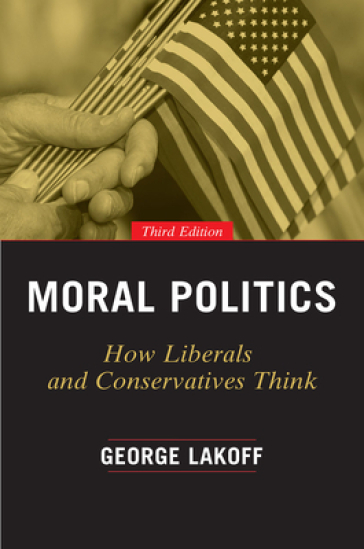
George Lakoff’s thesis comes to mind, that the distinction lies in whether one’s family adhered to the model of “strict father” or “nurturant parent.” The former winds up friendlier to a politics of authoritarian hierarchy, the latter to one of empathy, tolerance, and a flatter distribution of power and resources. Whereas Lakoff’s evidence comes from the neuroscience laboratory, I tend to prefer Woodard’s, which comes not only from the analysis of political and literary texts, but from voter rolls and dialect regions. Woodard, leaning heavily on Wilbur Zelinsky’s 1973 Doctrine of First Effective Settlement, would argue that beliefs have their origins in historical experience, migration and the founding of a socio-economic community. The belief system associated with that founding is then reproduced generation after generation by cultural means. For Woodard, therefore, place has a stronger influence than parental style. Where you grow up becomes determinative in most cases, although heterodoxy is possible “with great effort” made “later in life.” One assumes that education is crucial to that effort.
Heterodoxy in regard to upbringing has been a theme in my own life, as has education. I’ve read widely and systematically and received fairly rigorous training in critical thinking. Of course, this is also what sets off the alarm bells when I find myself highly persuaded. Ever since I first read Woodard’s American Nations—and recently, his brilliant Union: The Struggle to Forge the Story of United States Nationhood (2020)—I’ve been seeking out opposing arguments, insights to dampen enthusiasm. I’m still looking.
ENACTING ECOLOGICAL AESTHETICS
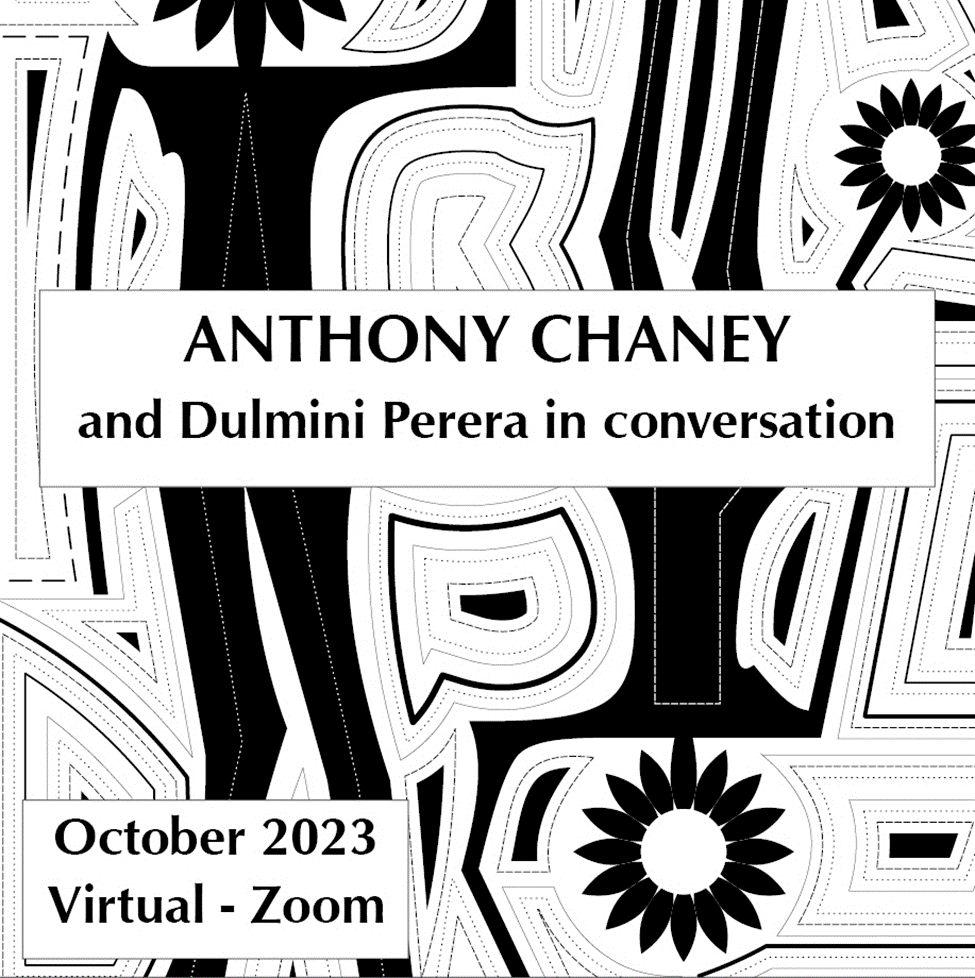
On October 31 (18.00-19.15 CET), Anthony Chaney will be speaking about his research to an international group of designers and architects for a project called Enacting Ecological Aesthetics. https://www.enactingecologicalaesthetics.com/anthony-chaney-in-conversation-with-dulmini-perera/
King, A Life and Blood Meridian: Reading Under the Heat Dome
By September 1st in Dallas, Texas, we’d been living under a heat dome for two and half months. The days during which it was actually pleasant to be outside could be counted on the fingers of one hand. I’m sure I wasn’t the only one who kept thinking about packing up and moving away, as if we truly enjoyed that sort of flexibility. Besides, where would we go? The summer has been brutal, that’s true, but that brutality is preferable to one’s house burning down in a wildfire or flooding in some unprecedented rain event. No one is safe. No one is well-positioned. The climate emergency is too enormous.
Yet we can meet it, experts tell us. The tools and know-how exist. All we lack is the political will. Okay, all right, but that’s not a lot of comfort when what’s happening today in the environmental realm is only slightly more scary than what’s happening today in the political.
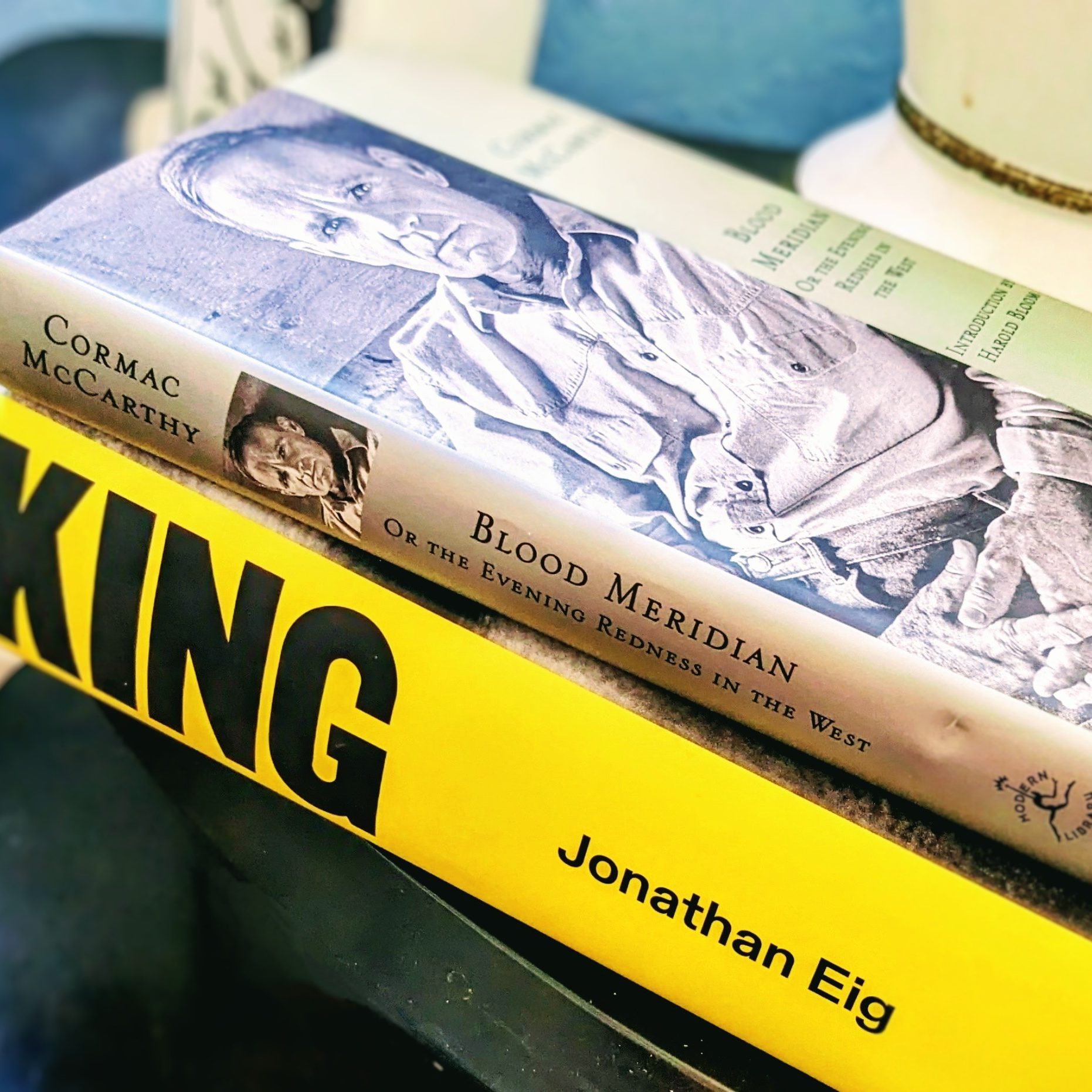
In short, I don’t think one be living under a heat dome all summer to experience multiple varieties of anxiety, climate grief, extreme mood swings, and the back-and-forth between brave efforts to generate hope and the far more frequent lapses into dread and despair.
The ups and downs of it all came home to me in a personal way when I happened to notice a couple of the books I’d been reading over the summer, one stacked on top of the other, on the end table next to my living room chair: Blood Meridian by Cormac McCarthy (1985) and this year’s King: A Life by Jonathan Eig. The juxtaposition was commentary.
The McCarthy I read decades ago; why on earth would I pick it up again? Partly it was to commemorate the author’s recent death, but mainly it was due to his two interconnected final novels published late last year. The first of the two, The Passenger, which I read almost the moment it became available, was so disappointing that I needed to go back and see if alleged masterpiece of decades ago actually held up. So much has changed since the 1980s. So much I took as foundational, as canonical, has required re-evaluation, especially concerning matters of geopolitics, gender, and race. The world has changed. I’ve changed. Maybe the books changed, too.
So I’ve been giving Blood Meridian a slow, patient read, a section or so per day. The verdict? I don’t know, maybe my capacity for horrific input has increased, or maybe it’s just life under the heat dome, but yes, it holds up. It’s even better than I remember it. I’m in awe of the language and of the achievement of imagination, even if it’s a question whether that achievement is ultimately defensible, given that what has been imagined is human depravity in all its depth and detail. The roving band of scalp-hunters ride into the city of Chihuahua, “to a hero’s welcome,” newly arrived from their latest massacre. They strip naked and settle into the public baths, the waters of which rise around them, transformed into “a thin gruel of blood and filth.” Such examples of virtuoso granularity can be found on pretty much every page.
There are also gestures here and there that I wouldn’t have picked up on when I read the book the first time simply because they speak to issues that weren’t on my radar. In the very first chapter, for instance, setting the stage for the whole book, “the kid” is pushed westward by fate into the contested borderlands where “not again in all the world’s turnings will there be terrains so wild and barbarous to try whether the stuff of creation may be shaped to man’s will or whether his own heart is not another kind of clay.”
May the stuff of creation be shaped to “man’s will”? Yes, it may, which is why we’re calling that stuff today the Anthropocene, and why the planet is heating so rapidly. But what does this say about “man’s will”? Were heat domes, wildfires, floods, climate migrations, and the sixth extinction the shaping that will intended?
We must cease the burning of fossil fuels, but one doubts whether habits so deeply sunk can be broken. It’s easier to imagine the end of the world than it is the end of our dependence on fossil fuels (to slightly tweak a well-known phrase). I’m not much persuaded by new programs for shaping “the stuff of creation.” By reason or by temperament, I’m more drawn toward those that advocate for reshaping what McCarthy refers to as man’s “own heart,” that “another kind of clay.”
But at this point, we can’t continue to use such language as “man” and “his own heart” in the same, once-routine way that McCarthy does. The “man” responsible for the Anthropocene is not universal man but the man of the modern West and his particular way of organizing perception, the man we associate with Western imperialism and the industrial and technological revolutions. That man tended to perceive the New World the same way McCarthy does: as terrain empty of history and therefore a kind of laboratory in which such things as progress and “man’s will” might be tested.
Rather, we think in terms of particular societies with particular histories and ways of seeing the world. We examine bedrock assumptions about nature, human nature and society, and how these assumptions expand or limit what is imagined to be possible. Rather than some universalized human heart, these particular assumptions and habits of perception become the locale of change. Many terms have been used to refer to this change space: worldviews, mindsets, orientations, paradigms. The technology-minded might favor the term “programming.” A term newer to my experience is “imaginary” or “social imaginary.” At times, people have spoken about that space as the realm of values, as in the call for “a radical revolution of values.” This was the change that Martin Luther King, Jr. called for in his April 1967 speech in which he connected the civil rights struggle to economic exploitation and the American military intervention in Vietnam.
If reading McCarthy put me in awe of his artistry, but also kindled feelings of despair over human prospects (to put it mildly), reading Jonathan Eig’s new biography put me in awe of King’s faith and courage, and moved me in ways that, at least in moments, relieved the despair. As expected of a new life of such a significant historical figure, Eig makes use of newly available sources of evidence and emphasizes what they reveal. In this case, much new material came from FBI records, and Eig provides a clearer understanding of J. Edgar Hoover’s racist hatred for King, how personally affronted he was by King’s sexual indiscretions, and how relentless he was in using institutional power to thwart King’s efforts and the movement in general.
What does it mean to be made a target by the very powers assigned to protect you? What are the consequences of that? (The election worker Ruby Freeman, also of Atlanta, has recently asked the same question.) Years ago, I read Taylor Branch’s “America in the King Years” series, but I don’t remember feeling such appreciation for the psychological battering King accepted from the moment he stepped forward to become the voice and face of what became the Civil Rights Movement. That battering included, from the beginning, the fear of imminent assassination.
What sustained King? Partly, Eig tells us, it was the faith that he had been called by God to serve. Early on, King claimed that this faith allowed him to make peace with death. Eig’s narrative shows how uneasy this peace actually was. King paid an enormous toll in damage to his physical and mental health and was regularly hospitalized for episodes of severe fatigue and depression.
King was sustained, too, by the belief, also grounded in his Christian faith, that personal suffering was a necessary step toward societal redemption. Eig comes back to this point again and again. “King was a product of the Black church,” he writes. “He learned the values of love and sacrifice and humility from the church, and he learned to live those values. His visions served to intensify what was already an intense personal relationship with Jesus Christ. One part of that relationship was his understanding that Christian social action, suffering, and martyrdom were connected.”
I don’t relate to the doctrinal particulars of King’s faith, but I’m intrigued by the dynamic that faith proposes. I’m struck by how it’s aimed at the very change space of the social imaginary. I mean, if anything runs more counter to the imaginary of competitive self-interest and material growth that predominates in American society and that frames our behaviors collectively and individually, it’s the voluntary acceptance of suffering in the interest of societal redemption. And for that matter, is there any better scenario, not for countering that imaginary, but for reinforcing it, for taking it to its logical conclusion than the one Cormac McCarthy describes in Blood Meridian page after page after page?
This essay was published earlier this month at the Society of US Intellectual History Blog
Reciprocity and the Exchange of Blows
It’s Christmas Day and King Arthur’s knights are gathered at the round table, celebrating with the king and queen. The Green Knight, a kind of giant tree-man, rides in on horseback, interrupts the party, and challenges anyone present to a game. Here are the rules: The challenger will be allowed to deliver a blow that the Green Knight will receive without resisting. But first the challenger must agree to seek out the Green Knight in one year’s time and receive without resisting the same blow from him.

This is the set-up to the epic poem, “Sir Gaiwan and the Green Knight,” circa 1300, which I read in a couple of translations after seeing the recent film adaptation, The Green Knight. I’d never read the poem before, but the more I thought about its opening scene, the more I thought: how weirdly precise … and how familiar.
My brother and I, when we were kids, would take turns punching each other in the stomach. I recall, too, a scene from a comedy about insanely competitive college ballplayers, in which teammates take turns thumping each other’s knuckles with a flicked middle finger until the skin over their fists is flaming and their eyes are watering with pain. This is a boys’ thing; this speaks to what it supposedly means to be manly—brave, tough, strong.
Still, the round table knights, big burly fighting men, hesitate to take the Green Knight up on his proposal. The possibility of winning a contest of this sort would depend on one’s belief that his capacity to dish out and take punishment outweighs that of his opponent, a giant who resembles a tree. Who would accept such a challenge? Let me rephrase that. What kind of stupid would a person have to be to take part in a game like that? In answer, I’ll simply say that my brother was two years older than I was, a lot stronger, and although, in our stomach-punching game, I never made it past the first round, neither did I ever refuse to play, and in fact, playing was, as often as not, something I myself initiated.
I may have been acting on an impulse that reaches far back into mythic time. It turns out that “Sir Gawain and the Green Knight” is not the only ancient tale that involves a similar challenge. Scholars have called it “the exchange game.”
Gawain, Arthur’s nephew, seated by his side, steps up and accepts the challenge. Making the most of his first-turn advantage, he takes a sword and beheads the Green Knight in a single stroke. To the surprise and horror of everyone in the hall, the Green Knight stands, picks his head up off the ground, reminds Gawain of the bargain, and rides away with his head in his arms.
More commonly in Arthurian studies, this particular version of the exchange game is referred to as the “Beheading Game.”
In my last post, I wrote about Robin Wall Kimmerer’s book, Braiding Sweetgrass: Indigenous Wisdom, Scientific Knowledge, and the Teachings of Plants and its concept of reciprocity: the biosocial bond between human and non-human life created by the giving and receiving of gifts and the gratitude and obligation it engenders. I wrote, too, about Kimmerer’s project of restoring healthy relations between human and non-human nature as re-story-ation. “Stories,” Kimmerer writes,
are among our most potent tools for restoring the land as well as our relationship to land. We need to unearth the old stories that live in a place and begin to create new ones, for we are storymakers, not just storytellers. All stories are connected, new ones woven from the threads of the old” (341).
Back in the 1980s, physicist and cosmologist Brian Swimme called on artists, poets, mystics, and nature lovers to tell a “Cosmic Creation Story” that connected the big bang, the Gaian emergence of atmosphere and soil, cell symbiosis, the music of Mozart and other works of human genius in a continuous line of creative adventure. More recently, in his 2021 book The Nutmeg’s Curse, Amitav Ghosh argues that lasting solutions to our various crises must be rooted in “a common idiom and a shared story—a narrative of humility in which humans acknowledge their mutual dependence not just on each other, but on ‘all our relatives'” (242). These are only two examples of many who believe, as Kimmerer does, that new and repurposed stories are crucial to disrupting our current trajectory of collapse and to building a constituency for transformation.
Kimmerer’s background gives her access to a storehouse of Indigenous myth to draw on and interpret for present times, but she warns against the “wholesale appropriation” of Indigenous stories, advising that “an immigrant culture must write its own new stories of relationship to place” (344). On the other hand, I seem to remember at some point in the book—I couldn’t find the location in my notes, and, unfortunately, Braiding Sweetgrass includes no index—Kimmerer reminds her readers that all peoples have a past to draw on that is indigenous to somewhere. The implication is that even the immigrant community she is referring to must have some claim—however attenuated, however muddied by subsequent adjustments—to pre-modern myth and to a time when human groups lived more reciprocally with, as Ghosh puts it, ‘all our relatives.'”
It was with all this in mind that I saw David Lowery’s 2021 film, The Green Knight, much lauded by critics but not I think very widely seen. A few of those critics remarked on the film’s ambiguousness, that two viewers might walk away with very different opinions as to the film’s topic and message. Be that as it may, I’ll continue with the story.
A year passes, and to make good on his promise, Gawain journeys to find the Green Knight. As Christmas Day approaches, he comes upon a castle where he’s welcomed by a Lord and Lady. The Lord encourages Gawain to stay a few days and soon proposes a playful exchange. The Lord will hunt during the day and bring back whatever he kills as a gift to Gawain. In return, Gawain will stay in the castle with the Lady and her maids and will give to the Lord whatever good things he receives there. Gawain doesn’t quite understand the point of the proposition, but he agrees.
The hunt, the castle—these episodes make up the bulk of the poem. As do many literary works from an oral age, they play to a wide audience. The descriptions of the hunt are vivid and exciting. They are all about danger, daring, and action. The castle passages are of a different order. The Lady is intent on seducing Gawain. Will he be virtuous, rebuff—and perhaps insult—the Lady? Or, given the likeliness that he will soon be beheaded by the Green Knight, will he take a pleasure offered while he can?
These aren’t the only dilemmas. If Gawain does accept what the Lady is offering, will he make good on the agreement with the Lord and return the same to him? In these castle passages, we have a moral dilemma, we have the ancient question, how should one behave knowing that death is unavoidable and that one’s time on earth may be cut short at any moment? We also have the components of farce.
The director David Lowery makes a few wise adjustments and additions to this basic story. Foremost, he makes Gawain a young man, not yet a knight, a lazy youth who has skated along on his privilege. His story, therefore, becomes a bildungsroman, his journey about the formation of character. That gives the story an arc less discernable in the poem. Without losing the framework, Lowery also keeps a stricter control of tone, emphasizing the existential qualities and deemphasizing the low comedy.
But let’s think about the story in Kimmerer’s terms. First, it’s a tale from the immigrants’ indigenous tradition, reaching back to the early medieval period, with components—particularly, the exchange game motif—that surely go even further into the past. Second, the two games Gawain is involved in—one with the Green Knight, the other with the Lord—are inverted versions of each other, each dramatizing the matter of reciprocity. Both the poem and film render the Golden Rule in ways that transform it from a platitude into a problem of giving and receiving. As a human being in the world, within a household, within a wider ecology: Are you willing to take as you give? Are you willing to give as you take? Are you willing, in other words, to truly engage with others in a reciprocal relationship?
Braiding Sweetgrass is a work of cultural ecology, and my discussion of the film is in the same spirit of critique. What I mean is, Kimmerer’s survey of our “broken” ecology, our bad faith relationships within the web of life, aims mostly at the realm of culture—questions of how stories and ideas shape our account of ourselves as living beings within a living world. Traditionally, cultural critiques have themselves been criticized as shallow, facile, romantic, quietist, anti-modern, and, for these reasons and others, too easily recruited by the forces of political reaction. Whatever the original sources for the Green Knight story may be, the poem which has come down to us certainly bears the marks of a patriarchal, Christian society. On the other hand, the nature of myths is that they can contain the materials for their own subversion. This paragraph, in other words, means to raise a number of new questions. But this post is long already, so for now at least, I’ll leave it here.
A version of this essay first appeared in Society for US Intellectual History.
NOTES:
Swimme, Brian. “The Cosmic Creation Story” in The Reenchantment of Science, ed. By David Ray Griffin, (Albany, NY: SUNY Press, 1988), 47-56.
An Alchemy of Giving: Reciprocity in Robin Wall Kimmerer’s Braiding Sweetgrass
At some point, intellectual historians will have to reckon with the phenomenal success of Robin Wall Kimmerer’s book, Braiding Sweetgrass: Indigenous Wisdom, Scientific Knowledge, and the Teachings of Plants. When they do, they may place it among the most important works of its kind, up there with Walden, say, or Silent Spring. Now is probably not the time. First published in 2013, it is at this writing number three on the New York Times bestseller list of non-fiction books in paperback, a list it has appeared on now for 131 weeks.

What accounts for the book’s success? Certainly, a genre exists for lyrical nature writing. But it appears that Braiding Sweetgrass has crossed over to a wider audience. In the midst of this era of multiplying, accelerating crises, there is something emotionally stabilizing about Kimmerer’s book, and I think that can be attributed to her central concept: reciprocity.
Kimmerer is a professor of botany, trained in universities and mainstream science. But her concept of reciprocity comes from her background as a member of the Citizen Potawatomi Nation and her training in Traditional Ecological Knowledge (TEK). In the creation story with which she begins the book, Skywoman falls from above in a beam of light. The creatures in the darkness catch her, care for her, make for her a home of mud, and she reciprocates with the bundle of seeds she carries in her hand. In this way the earth was made, “not by Skywoman alone, but from the alchemy of all the animals’ gifts coupled with her deep gratitude” (4). An alchemy of reciprocal gifting, in other words—you receive a gift, you’re grateful, and you give a gift, and that creates a bond. Kimmerer later gives this a more systems science description: new arrangements are created, old ones transformed, by a joining of “obligate symbiosis” (343).
Indeed, Kimmerer is braiding together a kind of intellectual symbiosis between TEK and a systems science-informed biology that pushes back against conceptions that have long persisted in popular thinking about life and how it works. We are used to the idea of human life as essentially a struggle against a hostile environment. We are used to the idea that what is exceptional about human beings is that they are inherently ‘out of balance’ with their environment, that some sort of parasitic selfishness is the essence of human nature. In contrast to this, Kimmerer encourages readers to imagine what “beneficial relations” between humans and their environment “might look like” (6). What she describes is less a struggle than a kind of letting go. “A gift comes to you,” Kimmerer writes,
through no action of your own, free, having moved toward you without your beckoning. It is not a reward; you cannot earn it, or call it to you, or even deserve it. And yet it appears. Your only role is to be open-eyed and present. (23-24)
This passage comes from a chapter that draws on Lewis Hyde’s 1979 book, The Gift: Imagination and the Erotic Life of Property. But I’ve heard the theological concept of grace similarly described. Certainly, the familiar transfer of religious ideas to ecological thinking is present in Kimmerer’s language. From the Indigenous perspective, of course, there was never a division between the two. Her TEK is as spiritual as it is empirical.
My father-in-law, wholly secular, a mathematician, used to say that for him a walk in the forest was a sufficient substitute for church. That’s not an unusual sentiment. Familiar too are claims, expressed by many, that they ‘love’ nature, that they love the natural world. The idea of reciprocity provides for the rarer situation; it provides a way to conceive of nature as, in Kimmerer’s words, receiving people’s love and loving people back (122). If you’re going to think of yourself in a reciprocal relationship with an ecosystem in the way Kimmerer means it, you’re going to have to allow yourself to think about ecosystems as having spirits—or minds—of their own. You’re going to have to partake in some animism.
That’s asking a lot. For many secularists and religious folk alike, that’s taking a step onto uncomfortable ground. “How, in our modern world,” Kimmerer asks, “can we find our way to understand the earth as a gift again, to make our relations with the world sacred again?” (31).
She answers by telling stories. Some are personal stories about her experiences with her children in the garden or with her students in the woods. Others, like the story of Skywoman, are Indigenous myths, repurposed for the present day. For Kimmerer, these myths are important and relevant to our moment because they come from a time when people could still hear and interpret the teachings of “other species,” especially plants. The wisdom of plants, she writes, is
apparent in the way that they live. They teach us by example. They’ve been on the earth far longer than we have been, and have had time to figure things out. They live both above and below ground, joining Skyworld to the earth. Plants know how to make food and medicine from light and water, and then give it away.
Plants know, in other words, how to live reciprocally, and “we need to learn to listen.”
Behind this prescription is a direct case for narrative as the primary method of conveying the foundational ideas that shape a society’s imaginary. Drawing on Gary Nabhan’s construction, Kimmerer describes her project of ecological restoration as “re-story-ation.” Our relationship with the land we live on is “broken” because the dominant story we tell about it is in error. That story was brought by the immigrants from Europe to justify their domination, and it continues to inform our institutional structures and shape our responses to crisis (9-10, 31).
Kimmerer is not alone in this viewpoint. Agreement about the source and the time of the wrong-turning is widespread among those scholars concerned with ecological breakdown, mass extinctions, global warming—those scholars who see these matters as the meta-crisis, the broader habitat, so to speak, in which our political and social ills are nested, nurtured, and grow.
Writing these words brings to mind a video clip presented at one of the hearings on the January 6, 2021 attack on the Capitol. This clip showed long-time, right-wing Republican Party operative Roger Stone taking the official oath for some militant organization. “I am a Western chauvinist,” Stone vowed, “and I refuse to apologize for creating the Modern World.” The way this militant group has chosen to articulate and perform the debate is crude, narrow, and toxic. Still, the group’s general reading of the history aligns, at least in broad terms, with those scholars who associate the de-legitimization of animist belief systems and the advancement and institutionalization of an extreme dualism with the rise of the modern world and the philosophies of the West.
Kimmerer, for her part, defends the practice of Western science. She defends its practitioners, for whom the actual work of science—of “revealing the world through rational inquiry”—is an “often humbling” and “deeply spiritual pursuit.” But Kimmerer makes a distinction between scientific practice and “the scientific worldview.” The latter uses the products of science and technology “to reinforce reductionist, materialist, economic and political agendas.” The scientific worldview is destructive because it sustains “the illusion of control” and “the separation of knowledge and responsibility.” Kimmerer’s “dream” is that “the revelations of science framed with an Indigenous worldview” will lead to “stories in which matter and spirit are both given voice” (345-46).
Who will tell these stories, Kimmerer asks (9). For me, someone who has invested so much time and much of his living in hearing, reading, and thinking about stories, that’s the intriguing question. What are these stories and where are they? Who will tell them? Who is telling them?
A version of this essay appeared in Society for US Intellectual History.
Self Mastery or Self Artistry

When the semester is in full swing and shrinking non-work-related reading time, a service called Audm, which shows up on my pod-catcher, delivers recorded readings of articles from publications such as The New Republic, The New Yorker, and The New York Times Magazine. Now I can “read” while driving, cooking, and doing chores around the house.
A recent selection was a February 2022 essay by Arthur C. Brooks, called “How to Want Less,” from The Atlantic. Content could not have better fit the occasion: Brooks’ piece was not too dense so as to make multi-tasking impossible, but also strewn with a wide range of references from the history of ideas. Sartre, Buddha, Aquinas. The “hedonic treadmill.” The Tao. How nice to make use of one’s education while also prepping for dinner. Brooks writes about his daughter in college. I have a daughter in college, too.
Granted, there’s not much new in Brooks’ argument. Human beings are wired to seek satisfaction, and yet the very same wiring makes satisfaction impossible to achieve. “We crave it, we believe we can get it, we glimpse it and maybe even experience it for a brief moment, and then it vanishes.” It’s “the greatest paradox of human life.”
Before she went away to school, Brooks explained the situation to his daughter, and she found the prospect gloomy. He assured her that happiness was nevertheless possible. We have millenniums of human wisdom to draw upon, the intellectual work of those who’ve confronted the paradox, artists and philosophers, scholars and social scientists, and sages both religious and secular. If inner craving is unquenchable, we can achieve a kind of happiness via “free will and self-mastery” and the help of ideas.
Good advice! “The key to life is a low overhead” has been my preferred version of the basic maxim. Fewer wants lessen the need to labor for wages. Yet there was something in Brooks’ construction that, well, left me a little unsatisfied.
One of the reasons Brooks’ presentation is so familiar is how heavily it leans on “evolutionary biological imperatives.” Brooks calls on the age-old struggle of mind over matter, intelligence versus “several millions of years of evolutionary biology,” “a battle against our inner caveman.” This way of framing the paradox emphasizes the separation between mentality and physicality so favored by modern Western thought. A common thread among many scholars of the ecological imagination is that this “great separation” is at the root of our interrelated emergencies: environmental, economic, social, and political. Do Brooks’ constructions work to reinforce the mind/body, modern/primitive separation? Do they reproduce the dominant, underlying conception that nature and the body are governed by blind, material forces and that the human mind is an immaterial ghost that longs to break free from the physical?
I don’t know—it feels like a quibble. Life couples symbolic and material systems, and there is a real distinction between them, despite how interrelated they are. And certainly, plenty of thinkers within the ecological tradition find a relationship, as Brooks does, between freedom and self-restraint. Prince Kropotkin, Tolstoy, William Morris, Gandhi, Lewis Mumford, and Paul Goodman are among those Theodore Roszak includes within a “subterranean tradition of organic and decentralist economics” in his 1973 introduction to Small is Beautiful by E. F. Schumacher. Of course, Schumacher could be included on the list, as could Ivan Ilych and Cornelius Castoriadis. Similarly, and more recently, Giorgos Kallis, degrowth advocate and author of Limits (2019), writes that freedom is “not the unobstructed pursuit of desires.” It is the “conscious reflection on” and “mastery” of them (105).
But mastery. Would it be nitpicking to take pause at that word, too? In his brilliant 2021 book, The Nutmeg’s Curse: Parables for a Planet in Crisis, Amitav Ghosh ties the great separation to the emergence of modern geopolitics. As they expanded their imperial projects around the globe in the sixteenth century, western nations sought to claim possession of territories and monopolize markets, and to do so, they claimed possession of and monopolized the faculties of thought and intention. Entities traditionally considered mindful, with subjectivity and the ability to act on intention—whether they were plants, animals, persons, or ecosystems—were reconceived as mindless, soulless, “inert.” This laid the groundwork for their exploitation. Animist or vitalist philosophies had to be stamped out at home and abroad. Groups and peoples who attributed mind to non-human life were conceived as demonic or as primitive. They were hunted down as witches, exterminated in genocidal attacks. Nature and people were subordinated. Nature and people were “mastered.”
Do we pay something of the imperial mindset forward when we use such terms? And if “mastery” is tainted, wouldn’t “self-mastery” be tainted, as well? What would be a more suitable alternative?
My first thought was “self-care,” just because there has been so much talk about it since the pandemic. We were urged to let ourselves off the hook when it came to the demands of the job, to quiet the interior voice that scolds us into pushing through the stress. I’m a supporter of the concept. I’m favorable to policy ideas, some of them coming from the degrowth community, to reduce the length of the workweek. How much could we de-accelerate the world’s metabolism, not to mention our own hedonic treadmills, if we all knocked off early and devoted the extra hours to restorative rather than productive activities?
“Self-care” isn’t bad, but I might prefer “self-artistry.” If I have faith in anything, I suppose it’s the faith that we can trust the ways and levels at which art can communicate, inside and outside of consciousness, and that it’s in these ways and at these levels that the foundational change we need most can occur. We’re lucky to have those special ones, whose artistry in some medium, whether god-gifted or doggedly earned, seems to allow them to communicate in the ways I’m talking about as easily as exhaling a breath. But that’s no reason to surrender the field completely to them.
Brooks misses his daughter. They were close. I’m not sure I read this word-for-word in the essay, but I can imagine how, before she went away to school, he would try to share his hard-earned knowledge with her, perhaps to help her prepare for adulthood, and how she’d undercut the pedantry with a look. Lately, they’ve taken to texting each other a photo every once in a while—message-free, just a random image from one of the day’s quiet moments. One might speak of how mindfulness, a certain quality of presence, can touch a small gesture like this with meaning. But Brooks says the practice makes him happy, and that’s easy enough to understand.
I’m not very artful with my flip phone. But lately I’ve learned how to take a photo with it and attach the photo to a text.
A version of this essay was first published in the Society for US Intellectual History Blog.
Songs and Theories of Being

Quiz scores and discussion board posts suggest that my students appreciate those items on the syllabus that can be watched or listened to rather than read. The Uncivil and Throughline podcast series have been rich sources of materials. Popular with students and with the instructor, too, was the Throughline episode on Billie Holiday, her nemesis, federal narcotics cop, Harry L. Anslinger, and her iconic song, “Strange Fruit.” Of course, I knew the song, and I was aware of the 2001 David Margolick book on the topic. But I didn’t know about Anslinger’s Javert-like persecution of Holiday, which he conducted from the time of her first performances of the song to the time of her death in the Metropolitan Hospital in New York.
The story is wrenching; it packs a punch. Placed on a timeline of African American History, it resonates contextually and foreshadows things to come. It illustrates the racist character of the wars on drugs of later decades. As did others, Holiday acted in a wartime and postwar ideological climate that offered leverage in the struggle for Black freedom. Her insistence on performing “Strange Fruit”—despite how uncomfortable the song made some feel, despite how ‘divisive’ some considered it to be—was a resolute stand against Jim Crow. Not only did she serve time for taking this stand, she put her career and her very life on the line. These were lonely choices that made the way less lonely for those who made similar choices in the decades that followed.
As a bonus, we have the artifact, the song itself, indestructible, reproducible, and experience-able—synchronously with others—in about four minutes’ time.
Only recently was I able to appreciate another of Holiday’s signature songs, “God Bless the Child.” Of course, I knew this song, too. My first exposure was almost certainly to the Blood, Sweat, and Tears version, a top-ten hit in 1969, which I heard on the radio growing up. Something about that version made me tune the song out. Maybe it was the exuberant arrangement and vocal performance, which overshadow the lyrics. Maybe I was too young to take them in. In any case, I apparently took little notice of “God Bless the Child” whenever I heard it covered by others–or even when I eventually heard Holiday’s own recordings.
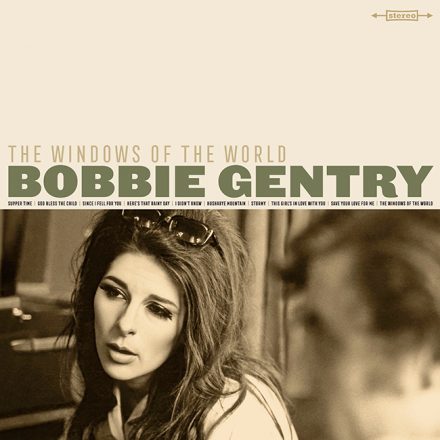
Then, not long ago, I came across a version on a “lost” Bobbie Gentry album, also recorded in the late 1960s. After failing to follow up on the massive commercial success of “Ode to Billie Joe” (1967), Gentry was taking a stab at becoming a jazz chanteuse, “a sort of Mississippi Julie London,” as the writer of the liner notes puts it. She planned an album of standards and interpretations of recent pop hits, and included “God Bless the Child,” but the project was abandoned, and for five decades, these recordings were unavailable. Hearing Gentry’s version, somber, minimally arranged—perhaps because it was never finished—I grasped the subtlety of the chord progression as if for the first time. For the first time, I grasped the idea of the song.
Holiday, with co-composer Arthur Herzog, Jr., contributed that idea. As the story goes, she’d gone to her mother for a loan and an argument ensued. Holiday crafted her mother’s refusal into the now well-known lyric:
Mama may have
Papa may have
But God bless the child that’s got his own
In his book about degrowth, Less is More, Jason Hickel uses a phrase that I mentioned in my last post, “theory of being.” I’m a little wary of the term. The concept Hickel is referring to is one many scholars find necessary to express and find a variety of ways to do so. Worldview. Mindset. Fundamental orientation. Ethos. Belief system. “The way we make sense of the world.” The systems theorist Gregory Bateson favored the term epistemology, which he used to emphasize the essential links he identified between ways of knowing, ways of learning, and ways of being or behaving. It’s hard to nail the concept down, in other words, and it takes one pretty easily into the weeds. But it seems to me that ultimately, a worldview, a mindset, a theory of being is a working vocabulary or set of metaphors used at a semi-consciousness level to account for the operations of reality. It tells us who we are, where we are, how we are, why we are.
Hickel uses the term theory of being when discussing the rise of capitalism in early modern Europe. That rise, Hickel argues, required not only violence in the form of enclosure and the manufacture of scarcity but a change in the way people understood themselves as beings in nature. That change evolved and intensified until it came to dominate across a broad society. It reproduces itself in the forms and structures of the society, both symbolic and material. It implies itself everywhere, even in songs. As Hickel and many others see it, the dominant theory of being in our society is mechanistic, atomistic, and reductionist. This theory provides that individual self-interest is primary and that all other life is exploitable to that end. These ideas disrupt all kinds of relations, including those between parent and child, so that in a society where it dominates, even a child must have “his own.”
If you analyzed every song for its theory of being, you’d run into trouble pretty quickly. I suspect the analysis would not be very productive. But what do you do with a song like “God Bless the Child,” a song that makes its “this-is-the-way-of-things” statement so plainly?
The theory of being expressed in “God Bless the Child” has a long pedigree in popular song. One of the very first American hits, at least as we understand the word today, was the song “Nobody,” recorded in 1905 by the renowned vaudeville performer Bert Williams, a mixed-race West Indies immigrant, a Black man who performed in blackface. The song comes out of a period of intensive, polyglot urbanization, and refinements in the edifice of racial caste. Its lyric expresses extreme social and economic anonymity. Most relevant to my topic is the sentiment expressed in the refrain:
I ain’t never done nothing to nobody,
I ain’t never got nothing from nobody, no time
And until I get something from somebody, sometime,
I don’t intend to do nothing for nobody, no time
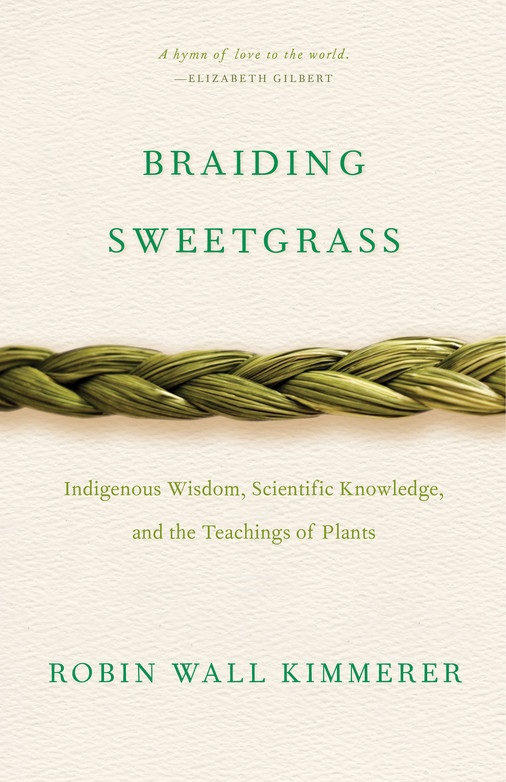
Revisiting this song, I couldn’t help but think about a recent read, Robin Wall Kimmerer’s 2013 bestseller, Braiding Sweetgrass. The book juxtaposes an Indigenous American’s theory of being with the dominant European import. One of Kimmerer’s key concepts is “reciprocity.” Reciprocity represents the loving exchange of gifts between organisms that constitute the symbiotic relationships from which ecosystems emerge and flourish. “The breath of plants gives life to animals and the breath of animals gives life to plants,” she writes, in one especially fundamental expression of reciprocity in nature. “My breath is your breath, your breath is mine. It’s the great poem of give and take, of reciprocity that animates the world” (344). In stark contrast to this, the singer in “Nobody” gives nothing, gets nothing. This organism exists in a state of no relation with the rest of the world. When scholars such as Hickel describe our society’s dominant theory of being as atomizing, this is pretty much what they mean.
A related, more pointed sentiment is expressed in “God Bless the Child”‘s middle eight:
Money, you’ve got lots of friends
Crowding ’round your door
When you’re gone and spending ends
They don’t come around no more
It is the way of things, the song says, that friendship is purely transactional. To put this in Kimmerer’s idiom, transactional relationships are those starved of the natural history of symbiosis that constitutes reciprocal relationships. Transactional relationships are those understood as monotone, stripped of complexity and the mutual interests of a thriving ecosystem. When scholars such as Hickel describe our society’s dominant theory of being as reductionist, this is one aspect of what they mean.
“When you have money, you have friends” is an American pop song trope, surely. It signals the sort of hard-nosed cynicism expressed commonly in blues. It’s a pose, a posture, a self-protecting, self-atomizing tactic that is struck often in the performances of songs, including performances of “God Bless the Child.” That we often call this cynicism “realism” indicates how dominant the dominant theory of being is. What thinkers such as Kimmerer are proposing is that change in theory of being is the root of change, is where the kind of long-term change we need today takes place.
To my ears, the Blood, Sweat, and Tears’ version leans toward cynical posturing. The effect is to endorse or reinforce the dominant theory of being, to reproduce it once again. But what about the Bobbie Gentry version, or, let’s say, the 1962 Lou Rawls version, which probably influenced Gentry, a big Rawls fan? These performances sound to me more like objections, protests, not against something as specific as lynching, but against the dominant theory of being itself.
They indicate a troubling tension. Many aspects of our lives are characterized by reciprocity—within our families, among our friends and close communities. But there is no denying the destructive influence the dominant theory of being has over these relations, over the way we see the world, and how we exist in it collectively.
An earlier version of this essay was posted on the Society for US Intellectual History blog.
The Great Separation and Other Backstories
In his new book, The Web of Meaning (New Society, 2021), Jeremy Lent writes about the Buddhist concept of “dependent origination,” which describes how “all that arises depends on everything that came before it” (253). I hope I’m not doing too much damage to the concept by understanding it to mean that everything originates from and exists within a context of relations, which for historians, it seems to me, is doctrinal. How could the discipline do what it does without a belief in this concept?
And not historians alone. One of the greatest challenges to storytellers of all kinds is figuring out where to begin. Struck by the insight that he’d begun his story too early, Hemingway famously deleted the first chapter or two from The Sun Also Rises, and the novel was probably better for it. On the other hand, I remember enjoying the long, stage-setting prologue of Richard Russo’s Empire Falls a good deal more than I did the remaining chapters. The point is that all stories have roots that wind back indefinitely; all narratives begin in medias res.
Non-fiction books of persuasive prose have their own ways to set an argument in context. “Capitalism: A Creation Story,” is the title of the first chapter of economist Jason Hickel’s 2020 book, Less Is More: How Degrowth Will Save the World. In forty swiftly-moving pages, Hickel surveys 500 years of history, drawing on Marx, Weber, Polanyi, the Frankfort School, E. P. Thompson, as well as more recent feminist takes on the rise of the modern, Carolyn Merchant’s 1980 classic, The Death of Nature, and Silvia Federici’s Caliban and the Witch (2004).
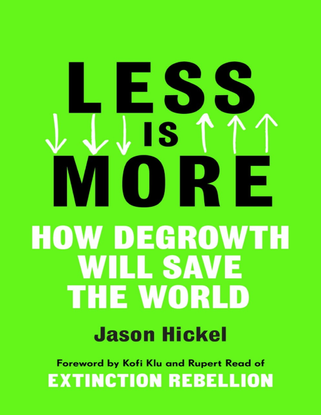
Hickel’s story is set in Europe, and it has two parts. The first part begins with the peasant revolts in the thirteenth and fourteenth centuries. Elites responded with enclosure. Shared or autonomous spaces, relatively abundant, were violently appropriated, made to be scarce, and those who had drawn livings from them were now forced to compete over the ever-shrinking remainder. Colonization repeated the pattern overseas; slavery applied it to human bodies. At first they called the result “improvement.” Now they call it growth, and it’s the justification and overarching goal of all macro-economic activity.
Simultaneous to the West’s transition in economics was a change in its “theory of being” (31). This is the second part of Hickel’s creation story. I was more familiar with this one. He calls it “the great separation.” Europeans came to think of themselves as separate from nature; the mind became perceived as separate from the body. Bacon and Descartes are identified as major perpetrators, though (due to dependent origination) they were only mining veins of ore running back to Plato and beyond. Bacon’s desacralized nature and Descartes’ dualism replaced the ages-old animist position, which recognized the embeddedness of spirit in matter and saw the whole of nature as intelligent and alive.
This theory’s historical function, however, was to justify the thingification of land and bodies that the enclosure pattern necessitated. The logic of dualism allowed humans to monopolize mind, to see themselves as supreme over the non-human world, and the result was unrestricted plunder. The survival of the fittest. The selfish gene. Homo economicus and the management of scarcity. None of this is natural, Hickel argues. It’s “the product of five centuries of cultural re-programming” (74).
Having set the stage, Hickel devotes the remainder of his book to arguing for the need of a postgrowth economics, to explaining the degrowth concept in detail, to defending it from misunderstandings and criticisms, and to describing alternatives to the growth imperative and the path ahead. This is, of course, the meat of the book, and its chapters work as intended, but my heart was in the backstory.
Jeremey Lent’s The Web of Meaning, as well as its predecessor, The Patterning Instinct (2017), elaborate on many aspects of the great separation, taking the story back to prehistory and the evolution of the human brain. The first separation, one might say, was the development of the prefrontal cortex. Humankind’s awesome powers of cooperative creativity and destructiveness were born in the split between what Lent calls animate consciousness and conceptual consciousness.
I read Lent’s books slowly and with pleasure, pausing at almost every page to examine the extensive footnotes, because he weaves these backstories together with all my other special interests: the intellectual history and contents of systems science, support for its insights in social scientific research—including the postgrowth economics of scholars such as Hickel—and the traditional environmental knowledge of indigenous peoples around the world. To this not unusual merger, Lent adds something of his own: the correspondence between the ecological imagination, which is supported by scientific insights developed mostly in the twentieth century, and Neo-Confucianism, a philosophical synthesis of traditional Confucianism, Buddhism, and Taoism initiated some eight centuries earlier, during the time of the Song dynasty.
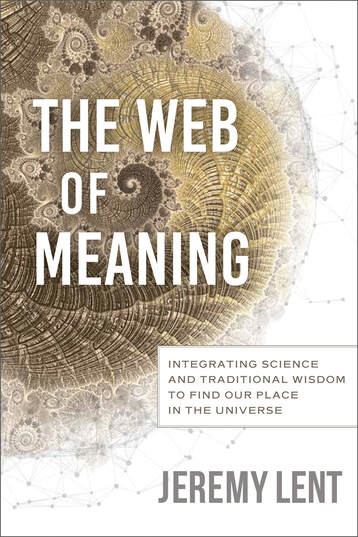
The Song-era philosophers grappled with a problem that had concerned the Greeks: the persistence of form in the midst of flux. Drawing on the traditional thought of the I Ching, they understood that “the entire universe is comprised of a dynamic flow of energy and matter called qi (pronounced chee).” As they pondered this dynamism, “they realized that while everything was composed of qi, the principles by which the qi was organized were just as important. The word they used for these principles was li, which originally referred to the swirling patterns visible in a piece of jade.” For Lent, li is a key concept, and like dependent origination, one at home in the ecological imagination. When the Neo-Confucians wanted to understand the li of a plant, Lent explains, they investigated “its relationship to everything else around it: the soil, other plants, the weather, its own history and the broader context of space and time beyond the plant’s immediate environment.” Their investigation of li led them to “a deeply integrated understanding of how humans relate to the natural world, how core values arise from human embeddedness in nature and how there is no ultimate distinction between what is material and spiritual” (The Web of Meaning, 93-94).
Throughout our history, Westerners have turned to Eastern thought from time to time for alternative, corrective wisdom. Lent is doing more than that. He’s laying out a backstory of world-historical proportions. He identifies the divergence between West and East in the Axial Age. Lent acknowledges the advances in moral philosophy across civilizations that we associate with this period. Nevertheless, it was during this time that the West constructed perception on the basis of “a split cosmos, a split human,” and the Far East built on the notion of a “harmonic web of life.” In short, Confucius and the Taoists went one way while the rationalists, monotheists, and religious dualists went another. (See Part Three of The Patterning Instinct). That set the stage for the great separation of the early modern West, which in turn, set the stage for our present crisis. All this backstory serves a purpose. Lent sees contemporary systems science and Song-era Neo-Confucianism as two pillars, each set widely apart in history, to support a world-cultural transition to an ecological civilization, a second axial age.
One is rightly wary of grand narratives that serve to organize centuries of data into useful interpretations. On the other hand, we currently find our society on several trajectories of cascading collapse, and the collective action necessary to respond requires a basic orientation. To put it simply, we need a story that tells how we got here, one that provides for a radical change of course. More than that, the story requires widespread and immediate dissemination. I find myself wondering where and how that dissemination would take place. I’m an educator. Should I be teaching The Great Separation, and if so, where? In what department, what division does it belong, in what prefix and course number? Should Western Civ be brought back into the core curriculum, this time with a major tonal shift? Maybe Economics is the best avenue, but from the perspective of Ecological rather than Classical Economics, and with short, accessible books by Jason Hickel or Kate Raworth as the texts. Or should there be some interdisciplinary course that mixes systems science, economics, and the history of ideas?
And here’s a related question. If certain partisan factions are upset to the point of violence over stories in our schools that spotlight white supremacy, how would they react to stories that spotlight human supremacy, which goes back further and is even more foundational than is our civilization’s structurally embedded hierarchy of race?
A version of this essay was published on the Society for US Intellectual History blog.
